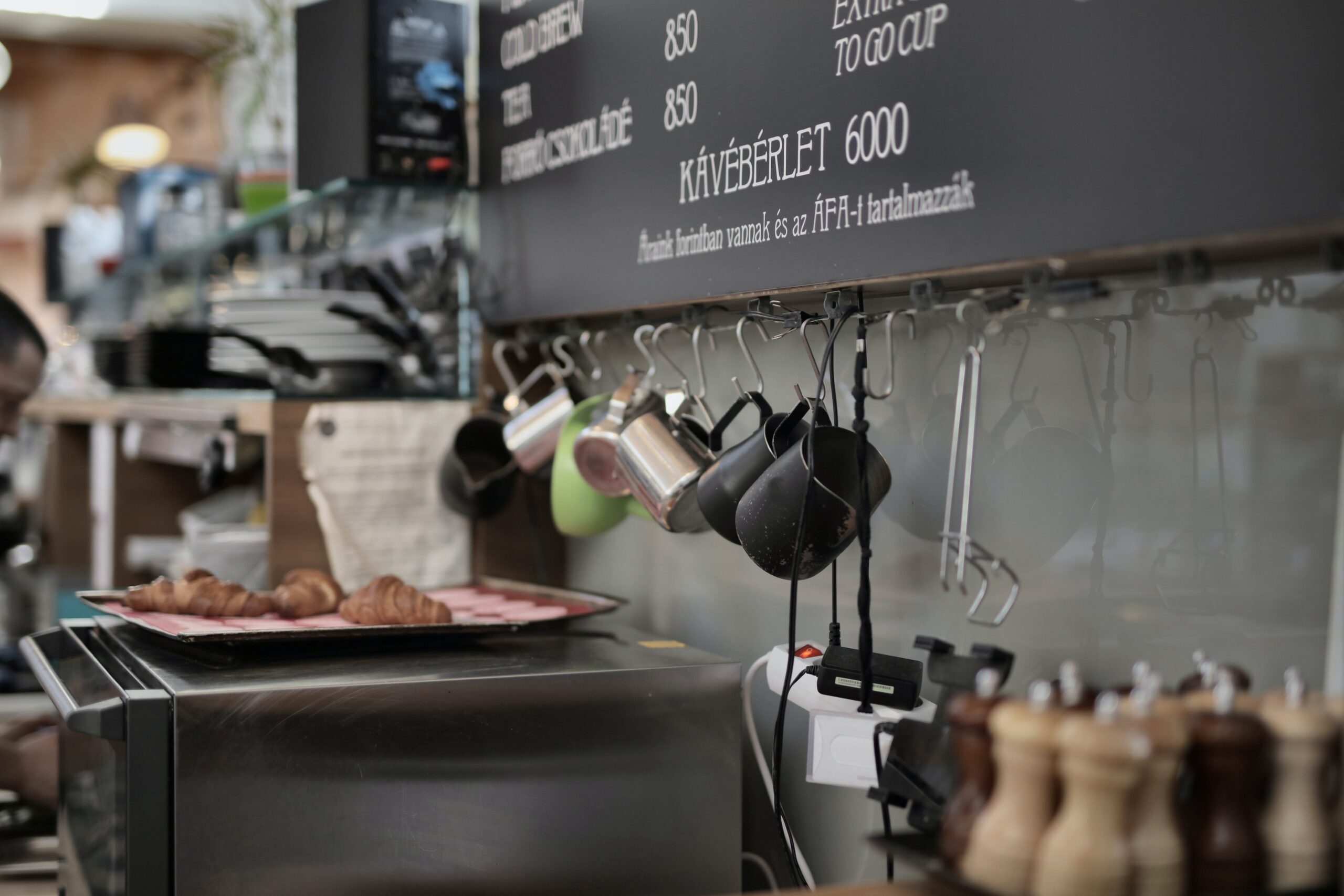To start a cloud kitchen, secure a location and necessary permits. Then, outfit the kitchen with the required equipment.
Embarking on a cloud kitchen venture begins by choosing an efficient location geared toward delivery rather than dine-in traffic. Streamlining operations for a cloud kitchen involves acquiring health and business licenses to comply with local regulations. Carefully selecting and investing in commercial-grade kitchen appliances and technology ensures seamless food prep and order management.
A clear business plan is crucial, outlining the menu, target market, and pricing strategy, as well as marketing efforts to build brand presence in a crowded digital marketplace. Success in this business model heavily relies on a strong online ordering system and partnerships with popular food delivery platforms. Moreover, building a solid foundation with efficient staff training and a focus on food quality can establish your cloud kitchen as a reliable choice for customers seeking convenience without compromising on taste.
Introduction To Cloud Kitchens
Cloud Kitchens, also known as ghost kitchens or virtual kitchens, are a revolutionary concept in the food service industry. These kitchens operate without a traditional dining space, focusing solely on delivery and takeout orders. As the demand for online food delivery surges, cloud kitchens are becoming a popular choice for entrepreneurs and established restaurateurs alike.
Defining The Cloud Kitchen Business Model
A cloud kitchen is a commercial kitchen that provides food businesses the space and facilities needed to prepare delivery-optimized menu items. With this model, owners can launch multiple brands or menus from a single location. They rely on online ordering from various platforms to reach customers.
The Rise And Popularity Of Cloud Kitchens
- Lower Overheads: Cloud kitchens can minimize costs attributed to front-of-house operations and real estate investments.
- Flexibility: Business owners can easily adapt menus and test new concepts without significant risk.
- Online Growth: A surge in online food delivery services has made cloud kitchens more viable and popular.
Advantages Of Starting A Cloud Kitchen Over Traditional Restaurants
| Cloud Kitchen | Traditional Restaurant |
|---|---|
| Low initial investment | High setup costs |
| Focus on multiple brands | Usually one brand per location |
| Reduced staffing requirements | Larger staff for full-service |

Planning Your Cloud Kitchen Business
Embarking on a cloud kitchen adventure requires careful planning and strategic thinking. To ensure your venture cooks up success, start with a solid foundation. This involves market research, niche identification, a comprehensive business plan, and a clear budget. Now, let’s delve into the essential steps of planning your cloud kitchen business.
Conducting Market Research
Understanding your market is the key to any successful business, especially in the culinary world. Begin by analyzing local demand, existing competition, and pricing strategies. Use online tools and surveys to gather data. Highlights should include:
- Customer preferences and habits
- Competitors in your area and their offerings
- Pricing trends and profit margins
Identifying Your Cloud Kitchen Niche
Specializing in a niche can set your cloud kitchen apart. Aim for a niche that resonates with your target audience. Assess the market for potential gaps that you could fill. Popular niche options include:
| Food Type | Prospects |
|---|---|
| Health-conscious meals | High demand among fitness enthusiasts |
| Ethnic cuisines | Attract customers looking for authentic tastes |
| Plant-based options | Growing trend with eco-friendly appeal |
Creating A Comprehensive Business Plan
Your roadmap to success is a detailed business plan. Your plan should cover the following elements:
- Mission statement: Your business’s purpose
- Market analysis: Insights from your research
- Organizational structure: Your team and their roles
- Marketing strategy: How you’ll attract customers
- Financial projections: Revenue forecasts and costs
Setting Up A Budget And Funding Your Venture
Launching a cloud kitchen demands a well-planned budget. List all potential expenses, including:
- Equipment and supplies
- Rent or leasing costs for kitchen space
- Permits, licenses, and insurance
- Marketing and branding expenses
- Initial inventory of food items
Explore diverse funding options such as:
- Personal savings
- Angel investors or venture capitalists
- Bank loans or credit lines
- Crowdfunding campaigns
Setting Up Your Cloud Kitchen Operations
Launching a cloud kitchen involves critical planning behind the scenes to ensure smooth daily operations. To start, focus on selecting the right location, kitting out your kitchen with the best tech and appliances, and making sure you comply with regulations. Let’s delve into setting up the operational foundation for your cloud kitchen’s success.
Choosing The Right Location And Infrastructure
Finding the perfect spot for your cloud kitchen is vital. Consider areas with high demand for food delivery services. Easy access for delivery personnel is crucial. Infrastructure is also key, from kitchen size to parking availability. Such factors affect the efficiency of your service.
- Analyze local delivery data to identify hotspots
- Assess kitchen space for workflow efficiency
- Ensure easy access for pick-ups
Equipping Your Kitchen With Necessary Technology And Appliances
A fully functional cloud kitchen relies on modern technology and heavy-duty appliances. Invest in quality kitchen equipment that can withstand a high volume of orders. Employ technology solutions for inventory management and order processing to enhance your kitchen’s productivity.
- Choose commercial-grade ovens, stoves, and refrigerators
- Implement smart inventory tracking systems
- Use integrated order management software
Navigating Health Codes, Licenses, And Permits
Complying with local health codes and obtaining the necessary licenses and permits is a non-negotiable step. It ensures the legality and safety of your operations. Check with local authorities for specific requirements. It’s a complex process but critical for your cloud kitchen’s legitimacy.
- Consult with a legal expert for guidance
- Apply for health department certification
- Secure food service and business licenses

Developing A Streamlined Workflow For Order Management
A robust order management system can make or break your cloud kitchen. Streamline the process from receiving orders to delivery. Keep the workflow simple and effective to prevent mistakes and ensure customer satisfaction. This leads to better reviews and repeat business.
- Integrate order platforms for centralized tracking
- Optimize the food prep sequence
- Train staff for quick and accurate order fulfilment
Crafting Your Cloud Kitchen Menu
Welcome to the heart of your cloud kitchen venture, where your culinary creations come to life and where your brand makes its mark: Crafting Your Cloud Kitchen Menu. A menu is more than just a list of dishes; it’s a strategic tool that can drive your business towards success. Let’s dive into the essentials of designing a cloud kitchen menu that’s not just mouth-watering but delivery-optimized, cost-effective, and reflective of your brand identity.
Designing A Menu Suited For Delivery
The perfect cloud kitchen menu marries delectability and deliverability. Your creations should travel well and arrive as intended. Consider factors like:
- Temperature retention: Choose dishes that maintain their heat or cold during transport.
- Sturdiness: Opt for packaging-friendly items that withstand movement.
- Simplicity: Simplify complex dishes for quicker preparation and consistent quality.
Sourcing Ingredients And Managing Suppliers
Elevate the taste and freshness of your dishes by:
- Partnering with local suppliers who provide quality ingredients.
- Developing a streamlined supply chain for timely deliveries.
- Establishing bulk purchasing agreements to reduce costs.
Balancing Quality With Cost-effectiveness
Achieve a harmony of excellence and economy by:
- Choosing ingredients that offer high value for money.
- Creating dishes that are cost-efficient to prepare without sacrificing taste.
- Testing and adjusting your menu to find the sweet spot between quality and affordability.
Incorporating Packaging And Branding
Seal the deal with packaging that protects and promotes:
- Invest in durable and insulated packaging to keep food intact.
- Ensure your branding is visible and memorable on all packaging.
- Customize packages to enhance the unboxing experience for customers.
Building An Online Presence
An online presence is vital for your cloud kitchen’s success. It connects you with customers and grows your business. Start by establishing a noticeable digital footprint. Here’s how:
Developing An Engaging Brand Identity
Your brand is your kitchen’s heart. It shares your story. Create a memorable logo and choose colors that speak to your tastes. Keep your branding consistent across all online channels. Use taglines that depict your kitchen’s flavor and personality. This builds trust and invites curiosity.
- Create a logo that stands out.
- Choose a color scheme that reflects your cuisine.
- Keep your messaging consistent.
Creating A User-friendly Online Ordering System
Customers love convenience. A simple online ordering system keeps them coming back. Ensure your website is easy to navigate. Menus should be clear and detailed. Offer a seamless checkout process. Simplify forms and suggest popular items. Make sure that your website is mobile-friendly too.
- Clear, detailed menus.
- Easy checkout process.
- Mobile responsiveness.
Leveraging Social Media And Digital Marketing
Social media spreads the word like wildfire. Post mouth-watering pictures and engage with your audience. Use Facebook ads to reach new customers. Start a food blog for more engagement. Optimize your content for search engines to improve your search visibility.
- Engage with followers regularly.
- Invest in targeted advertising.
- Start a blog related to your cuisine.
Partnering With Food Delivery Platforms
Delivery platforms expand your reach. Partner with popular services like UberEats, Grubhub, or DoorDash. Highlight your best dishes on these platforms. Read and respond to customer reviews. Positive interactions lead to customer loyalty.
- Partner with established platforms.
- Feature your signature dishes.
- Engage with customer feedback.
Launching Your Cloud Kitchen
Welcome to the exciting journey of starting your cloud kitchen, a modern solution to today’s ever-evolving dining needs. In this segment, we focus on the crucial steps to successfully launch your cloud kitchen. These guidelines will set the foundation for a thriving culinary venture, without the overheads of a traditional restaurant.
Executing A Soft Launch And Testing Operations
Before the grand reveal, a soft launch provides an invaluable testing ground. This phase helps iron out potential kinks in your operations. During a soft launch:
- Invite friends and family to try your menu.
- Test your workflow from order receipt to delivery.
- Monitor the kitchen’s performance under real conditions.
The feedback obtained is gold; use it to refine your processes before the big day.
Announcing Your Official Launch
After tweaks and improvements, it’s showtime. Announcing your launch should be a blend of excitement and strategy. Use these tactics:
- Create a buzz on social media platforms.
- Send out an email blast to subscribers.
- Connect with food bloggers and influencers for promotional content.
Ensure each step is crafted to entice a broad audience eager to try your culinary creations.
Gathering And Acting On Customer Feedback
Post-launch, customer feedback becomes the beacon for continuous improvement. Make sure to:
- Set up a simple feedback system, like surveys or review prompts.
- Analyze comments for common themes or issues.
- Act promptly on the feedback to improve quality and service.
Treating feedback as a stepping stone fosters growth and customer loyalty.
Scaling Up Your Menu And Services
Consistent quality opens doors for expansion. To scale up:
- Introduce new menu items based on trending flavors or cuisines.
- Consider collaborations with local suppliers for fresh ingredients.
- Expand delivery services to cover a larger geographic area.
Scaling ensures that your cloud kitchen consistently meets the evolving tastes and expectations of your clientele.
Growing And Sustaining Your Cloud Kitchen Business
Embarking on the journey of a cloud kitchen venture brings its own set of challenges and rewards. After setting up your virtual restaurant, the focus shifts to growth and sustainability. A robust plan to nurture and expand the business is crucial. Explore effective strategies, maintain high standards, and adapt for success.
Implementing Effective Business Growth Strategies
- Focus on data-driven decisions to optimize menu items and services.
- Invest in marketing campaigns that target your audience.
- Engage with customers on social media to build a loyal fanbase.
- Utilize promotions and discounts to attract new patrons.
Maintaining Quality And Consistency
Quality dishes lead to satisfied customers. Implement stringent quality checks and hire skilled chefs. Regularly train staff to ensure each dish meets high standards. Use customer feedback to improve and maintain your culinary excellence.
Exploring Expansion Opportunities
Scaling your cloud kitchen can take many forms. Consider opening multiple brands under one roof or expanding to new locations. Collaboration with food delivery platforms can also increase reach.
Adapting To Market Trends And Innovations
Stay ahead of the curve by embracing new technologies and food trends. Integrate smart kitchen gadgets, and consider eco-friendly packaging. Analyze customer data to spot and capitalize on emerging trends.

Conclusion
Launching a cloud kitchen can be an exhilarating journey. Ensuring you have a solid plan is key. Tackle each step with thorough research and passion. Remember to optimize your operations for efficiency. Your dedication can result in a successful, modern culinary venture.
Ready, set, cook!
Frequently Asked Questions For How To Start A Cloud Kitchen
Is Cloudkitchens Profitable?
CloudKitchens’ profitability depends on several factors, including location, operational efficiency, and demand. While precise profit margins vary, the cost-saving model of shared kitchen space can lead to potential profitability for users.
Are Cloud Kitchens A Good Idea?
Cloud kitchens can be a great business model due to lower overhead costs compared to traditional restaurants and scalability for delivery-focused services. They cater well to the rising demand for food delivery.
How Do I Start A Ghost Kitchen At Home?
To start a ghost kitchen at home, confirm local regulations permit it. Secure necessary permits and health certifications. Design a kitchen layout for efficient food production. Choose a delivery platform partnership. Market your menu online for target audience visibility.
How Does Cloud Kitchen Work?
A cloud kitchen operates as a delivery-only restaurant, without dining space. Chefs prepare meals, and orders come exclusively via online platforms, ensuring efficiency and lower overhead costs.







